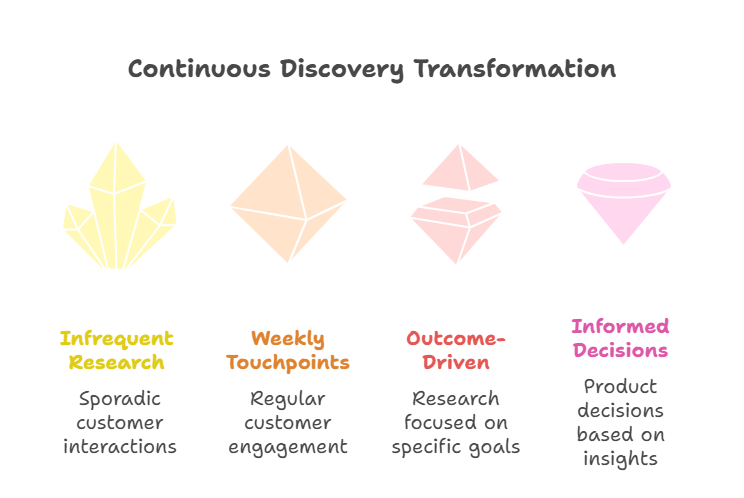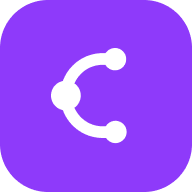What Is Continuous Discovery? A Guide for Product Teams
Learn how continuous discovery helps product teams gather ongoing customer insights through weekly research activities to build better products.
What Is Continuous Discovery?
Continuous discovery is an ongoing research approach where product teams conduct small, frequent research activities throughout the product development cycle. Unlike traditional research methods that happen sporadically, continuous discovery embeds customer feedback into the weekly workflow of agile teams.
This framework requires product teams to engage in customer research on an ongoing basis, prioritizing regular touchpoints with customers to understand their evolving needs. The approach transforms how teams build products by ensuring decisions are grounded in real user perspectives rather than assumptions.
The Core Principles of Continuous Discovery

Weekly Customer Touchpoints
At the heart of continuous discovery is the commitment to weekly customer interactions. As Teresa Torres emphasizes in her book Continuous Discovery Habits, product teams should ideally engage with customers on a weekly basis through small research activities. This regular rhythm ensures teams stay connected to user needs as they evolve.
These weekly touchpoints aren't massive research projects. Instead, they're small, frequent activities throughout the product development process. This could include brief interviews, usability tests, or feedback sessions that inform immediate decisions.
Outcome-Driven Research
Continuous discovery focuses on gathering insights to achieve specific outcomes rather than collecting data for its own sake. Each research activity should be aimed at informing a specific outcome, whether it's validating a feature hypothesis or understanding a user pain point.
This outcome-oriented approach ensures that research directly impacts product decisions and helps teams avoid building features that don't deliver real value to users.
Why Continuous Discovery Matters
Staying Aligned with User Needs
Markets and user preferences change rapidly. Continuous discovery acts as a reality check that consistently grounds you in your customers' perspectives, ensuring your product remains relevant and accessible. By regularly gathering data from users, teams can pivot quickly when needs evolve.
Evidence-Based Decision Making
This approach emphasizes evidence-based decision-making throughout the product lifecycle. Instead of relying on assumptions or outdated research, teams make decisions based on recent, relevant customer insights. This reduces the risk of building products that miss the mark.
Reducing Bias in Product Development
Continuous discovery helps teams avoid biases and build better products by constantly testing assumptions against real user feedback. The regular cadence of customer interactions prevents teams from falling into echo chambers or confirmation bias.
Implementing Continuous Discovery
Start with Customer Interviews
One of the cornerstones of setting up a successful continuous discovery program is integrating regular customer interviews. These conversations help teams understand customer pain points and needs, which in turn create the business value driving your outcomes.
Define Your Desired Outcomes
Before beginning continuous discovery, teams should define the desired outcome and effectively plan customer interactions. Clear outcomes ensure that research activities are purposeful and directly contribute to product decisions.
Make It a Team Habit
Continuous discovery works best when it's embraced by the entire product team, not just researchers. The process involves conducting small research activities through weekly touchpoints with customers, by the team who's building the product. This collective ownership ensures everyone stays connected to user needs.
Visualizing Your Discovery Process
Mapping out your continuous discovery framework can help teams maintain consistency and clarity. Consider using ClipMind to create visual representations of your discovery habits and customer feedback loops. The platform's mind mapping capabilities can help you organize research findings and identify patterns in user needs.
For product teams looking to implement continuous discovery, tools like the AI Competitor Analyzer and Product Idea Brainstormer can complement your research efforts by providing additional market context and innovation frameworks.
Continuous discovery transforms product development from a guessing game into a evidence-driven process. By making customer insights a regular part of your workflow, you can build products that truly resonate with users and adapt quickly to changing market conditions.
 ClipMind
ClipMind